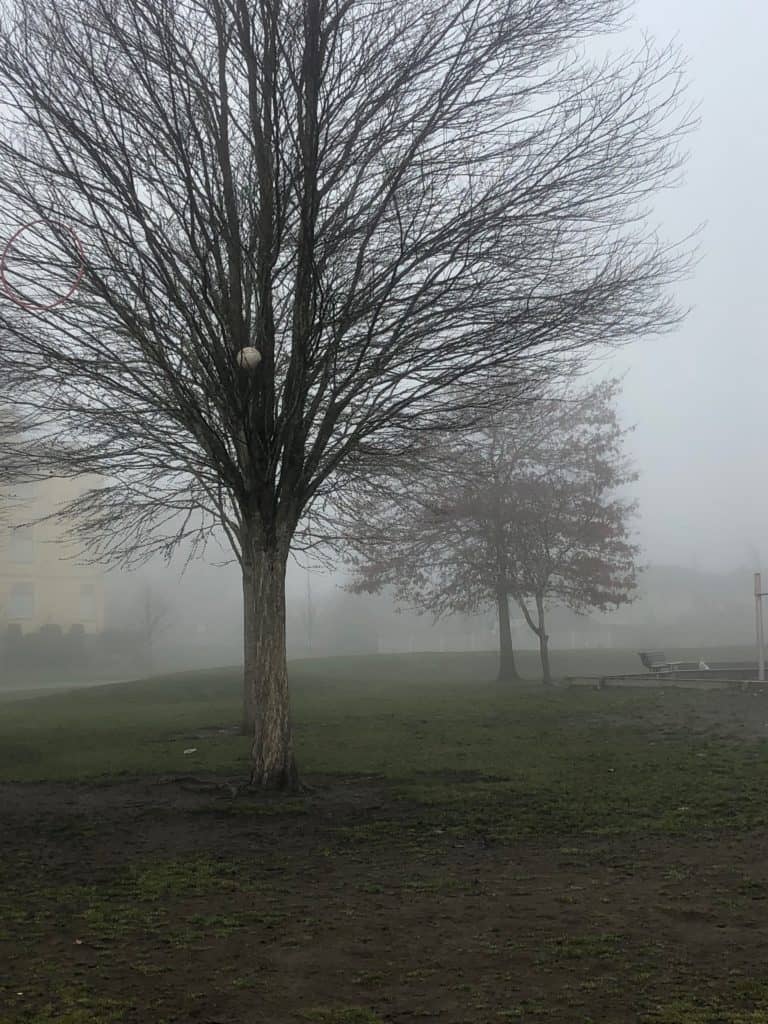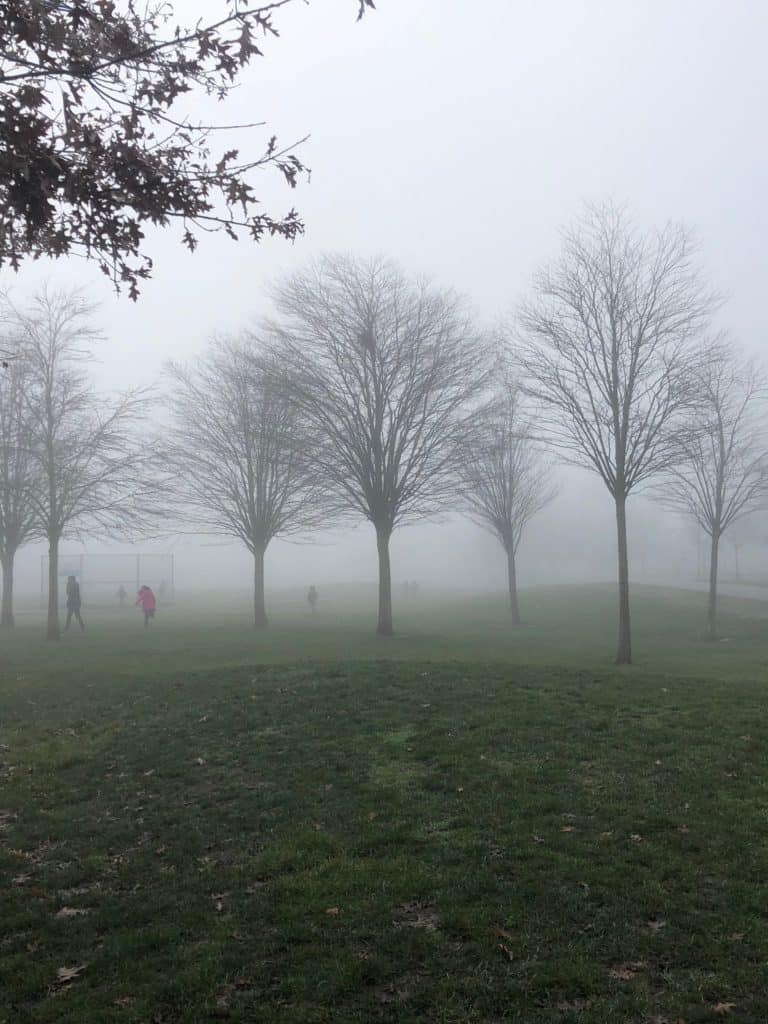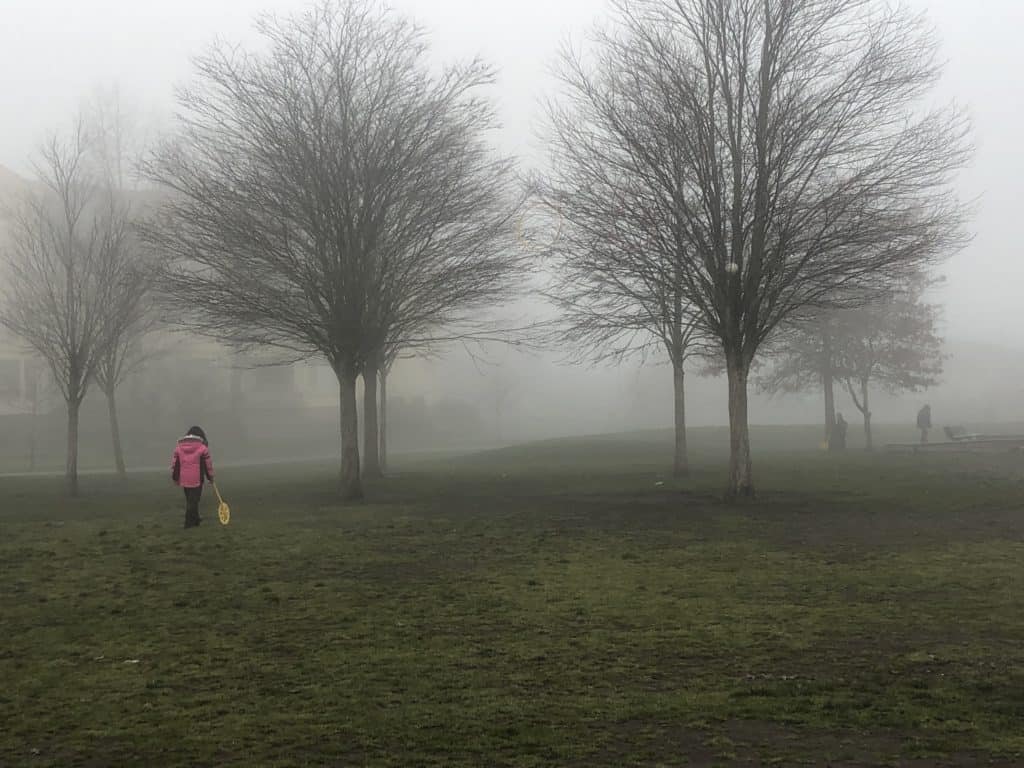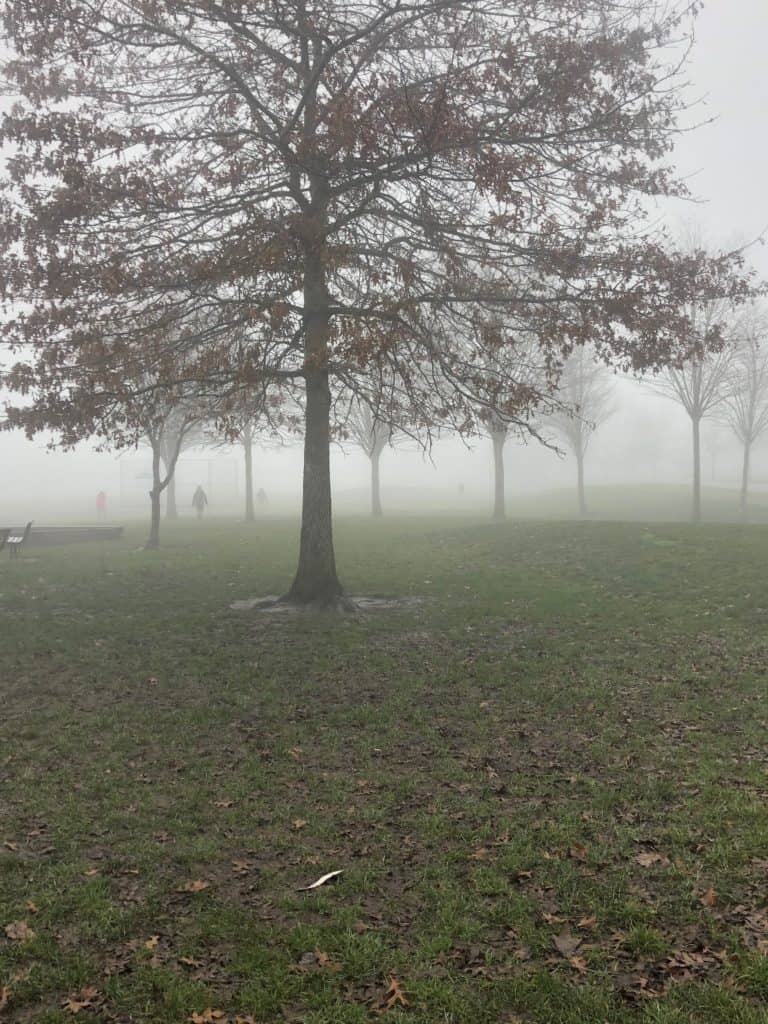- filed under: Risky Play Resources
Risky Play: Getting Lost & Found In The Fog
If you’ve ever attended one of my teacher development workshops, you’ve heard me speak about the importance of allowing children to take risks in outdoor play and learning at school. The phrase ‘risky play’ has increasingly been used in education circles, and originated with Ellen Sandseter’s 2009 study, Categorising risky play—how can we identify risk‐taking in children’s play?
RELATED POST: WHAT IS RISKY PLAY?
Risky Play
In her study, categories of risky play were determined. Play where children can disappear or get lost is one of the 8 known categories of play currently found under the terminology of ‘risky play’.
As teachers, we talk at length about the importance of creating classrooms where children feel safe to take risks in their writing or their maths, but we shy away from supporting or holding space for students to take risks in their physical play. Much can be said about why we do this as teachers, and my PhD will explore this phenomenon in detail, so stay tuned!
The bridge between theories of risky play and practical supervision of risky play in a school setting can be somewhat daunting for practising teachers. This post will be the first in a series of posts to help unpack how teachers can support risky play in K-7 school settings, and clarify some of the many benefits that exist for both teachers and students when we hold space for risky play.
RELATED POST: RISKY PLAY WITH TOOLS
As always, children must be supervised and cared for under the guidance of a qualified and experienced educator when risk is introduced to outdoor play and learning.
I will also remind teachers that hazards are different than risks, and that it is the role of the teacher to ensure hazards are assessed and removed (or mitigated as best as possible) from the learning environment to ensure the safety of students. The level of risk a child chooses to participate in should be entirely up to the child, and children should not be coerced or forced into play situations that make them uncomfortable.
Risky Play Where Children Can Disappear or Get Lost
Fog is somewhat unpredictable and can’t exactly be counted on to arrive or stick around in any outdoor learning environment. So when the fog arrived, there was a scramble to sort out how best to make use of this natural phenomenon.
Fog presents us with an emergent opportunity to allow children to ‘get lost’ and disappear within the safe confines of our fenced school-yard, but it also presented us with an opportunity to link math and science curriculum to the fog play.
This term, Rene Gualtieri (a York university graduate currently working on her diploma in outdoor environmental education at UBC) is volunteering in our outdoor classroom. The following is her experience as a recently qualified teacher in the outdoor classroom during a day of hide and seek in the fog:
Hide & Seek Fog
Standing this morning in the garden, you could smell the fragrance of freshly laid mulch, hear the birds…but hardly see a few metres in front of you. Of course, the obvious question arises: what shall we do in the garden today with heavy fog and such low visibility?
We set out to the school field to venture into the twilight zone. The challenge today for our students was to partner up and measure how far they needed to walk before finding their friend hiding among the eerie fog”
Emergent Math & Science Curriculum
This presented a great opportunity to introduce and practice using a new math tool: the trundle wheel. This tool measures how many metres you’ve walked with one click for every metre. The activity also gave students a chance to challenge their vision, multi task (walk, count and keep an eye out for their partner) and get some physical activity for the day! Some students walked slower than others in order to really focus on counting, while others kept their eyes peeled for their partners and paired up with another student to keep track of counting.
Further discussion lead to students explaining how fog is created; linking previous science focused lessons and connecting their understanding to their own bodies by using the example of breathing out into the air to see condensation in action.
The important take away from this activity is that sometimes, you don’t have to model and over explain how something works. In some cases, handing over a tool and letting a child “run with it” brings about better outcomes and a chance to figure out the tool for themselves. Even if everything seems foggy at first”
Risky Play: Getting Lost & Found In The Fog
Of all the types of risky play we can support for children in schools, the ability to allow children to disappear or feel that they are lost is one of the hardest.
We simply can not allow children to actually leave our sight lines and ‘get lost’ at school, even though the risk of actual injury is the lowest with this type of play. Other schools that practice this type of risky play use landscaping, or strategic design of structures with hiding spots, that allow children to feel they are hidden away from adult supervision.
Our day in the fog presented a fantastic opportunity to allow the children to have a sense of solitary exploration, with the temporary thrill of imagining they were lost- without the real world consequences.
As educators, we could not pass up the opportunity to link this thrilling experience with the emergent math and science curriculum that presented itself and so a game was invented: One partner went to go ‘get lost’ in the fog until they could not see the partner with the trundle wheel. Partner two estimated how many metres away their friend was and then used the trundle wheel to measure the distance. Once everyone is reunited, switch roles!
Benefits of Risky Play
The benefits of risky play include a thrilling sense of independence, and an ability to test one’s own limits within reasonable circumstances. Risky play that allows children a sense of disappearing or getting lost has the added benefit of allowing children to explore a new environment, even if the only new aspect is limited visibility. This leads to an increased self-awareness of one’s own limitations.
Kids who didn’t like the feeling of disappearing into the fog stuck close to the adults. Kids who embraced the adventure and thrill of the unknown quickly wandered off into the mist.
Want more ides for risky play? You can also join me on Pinterest:





